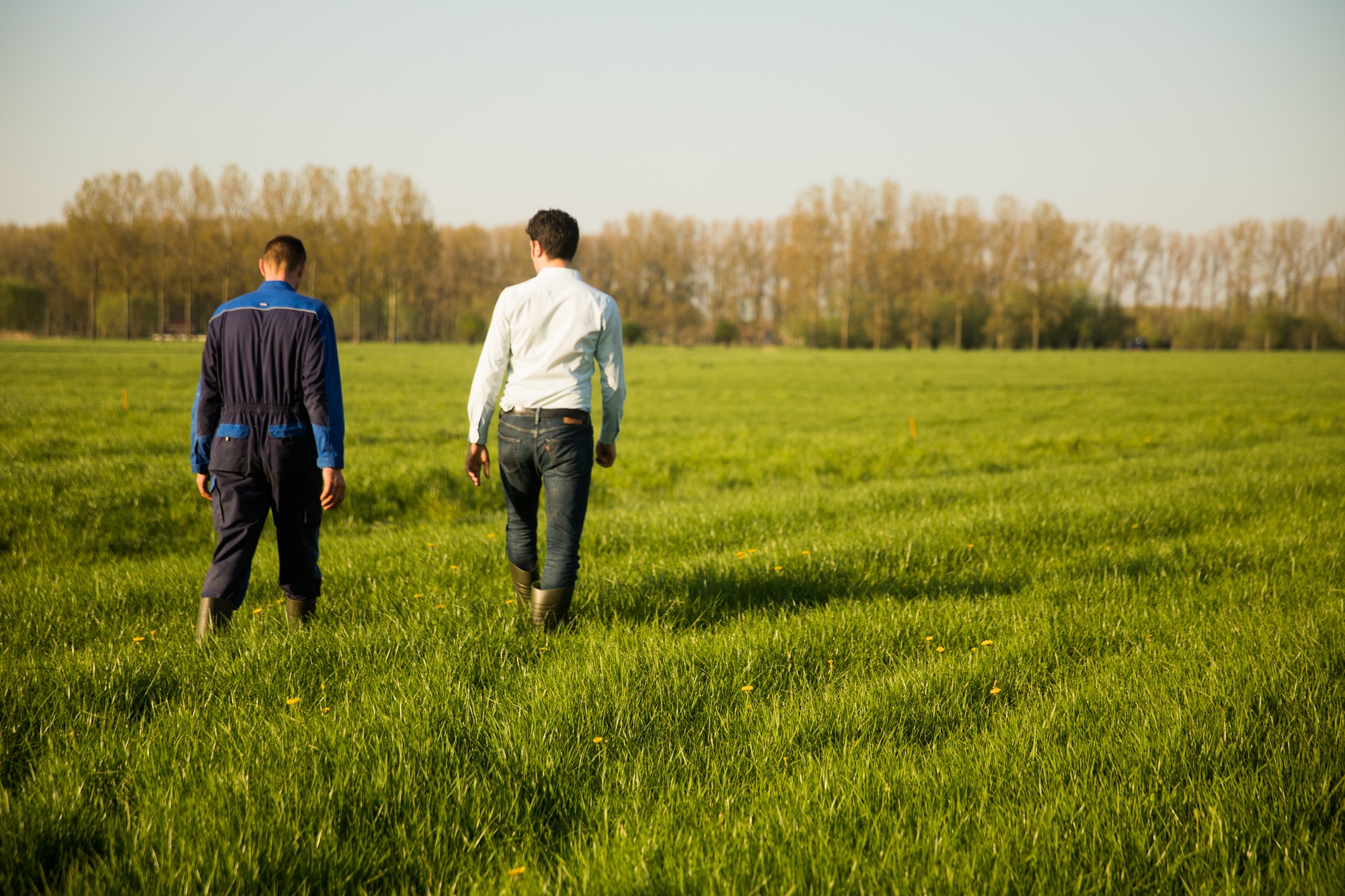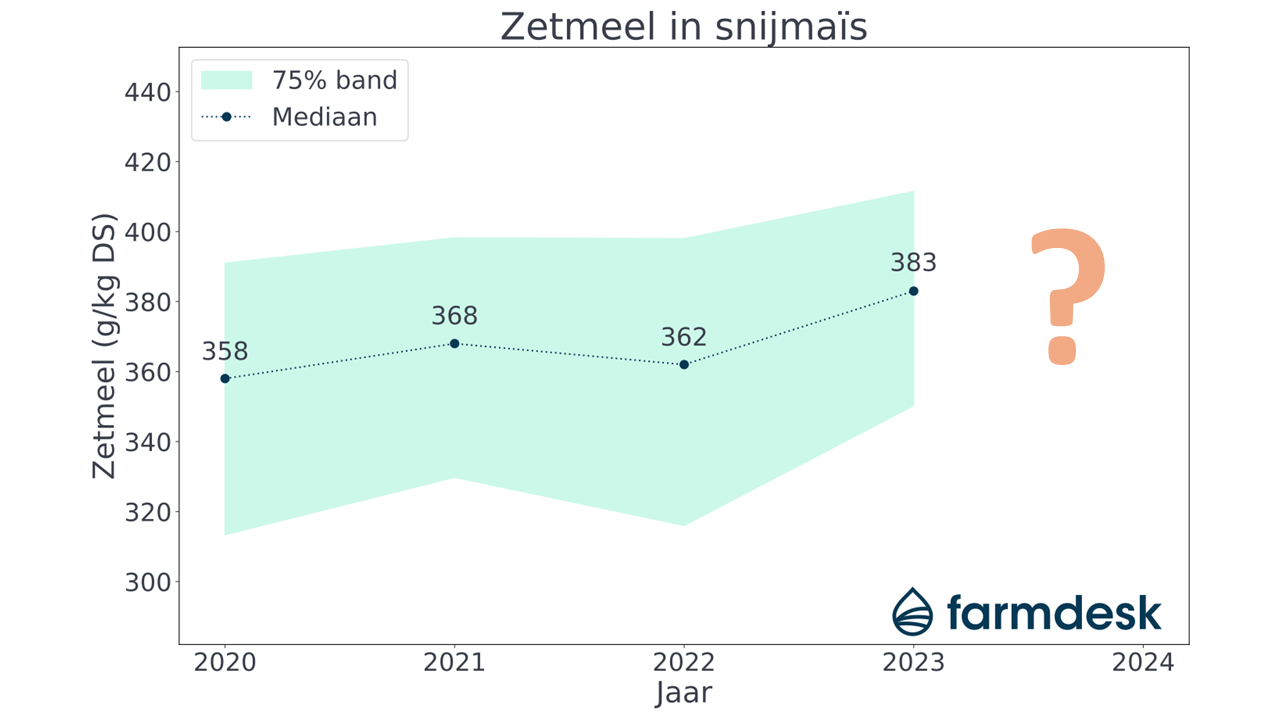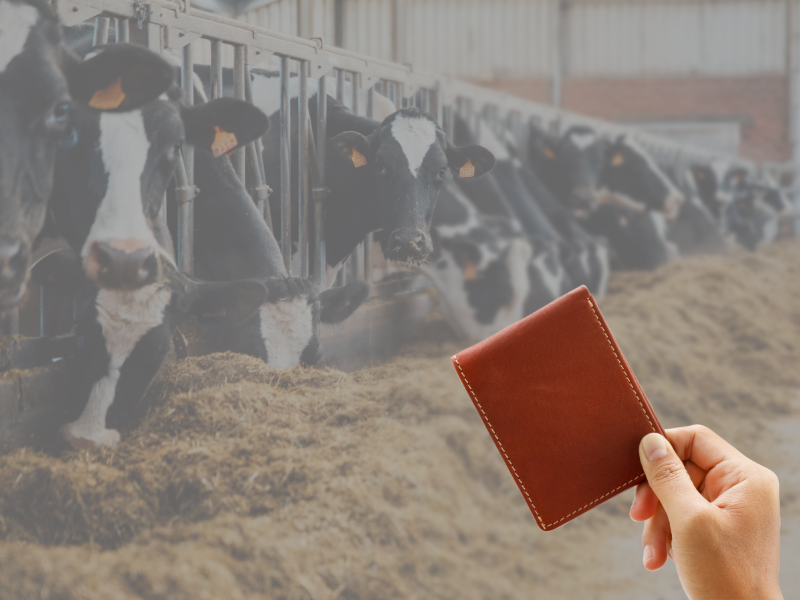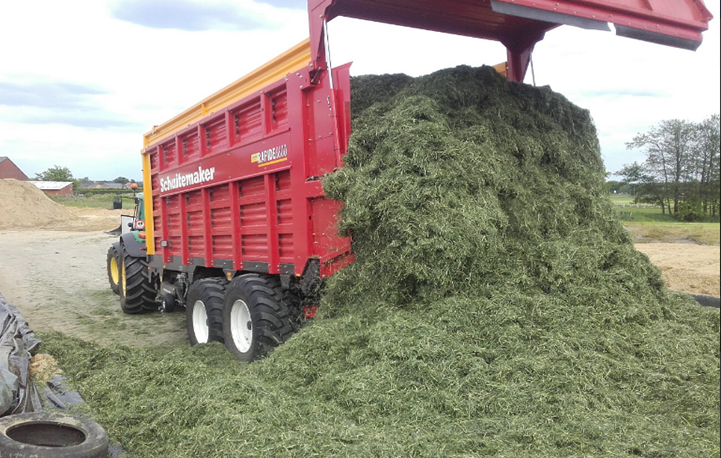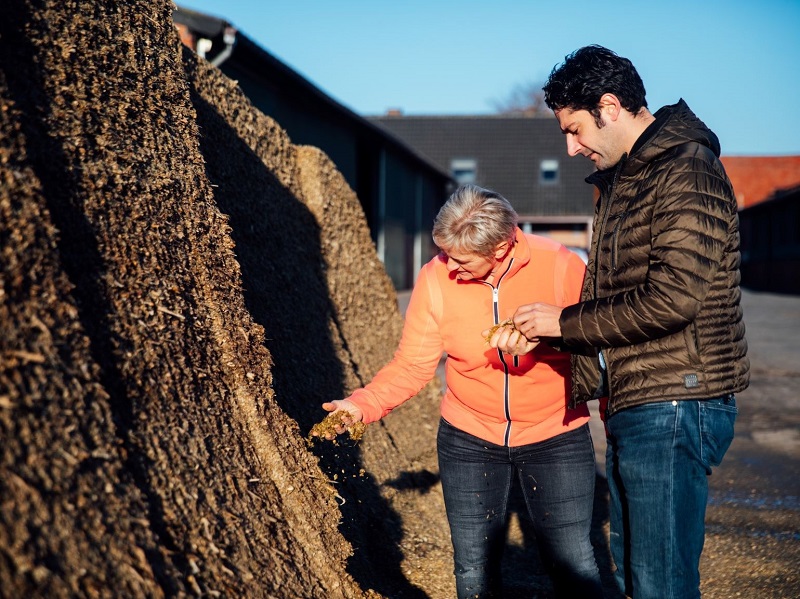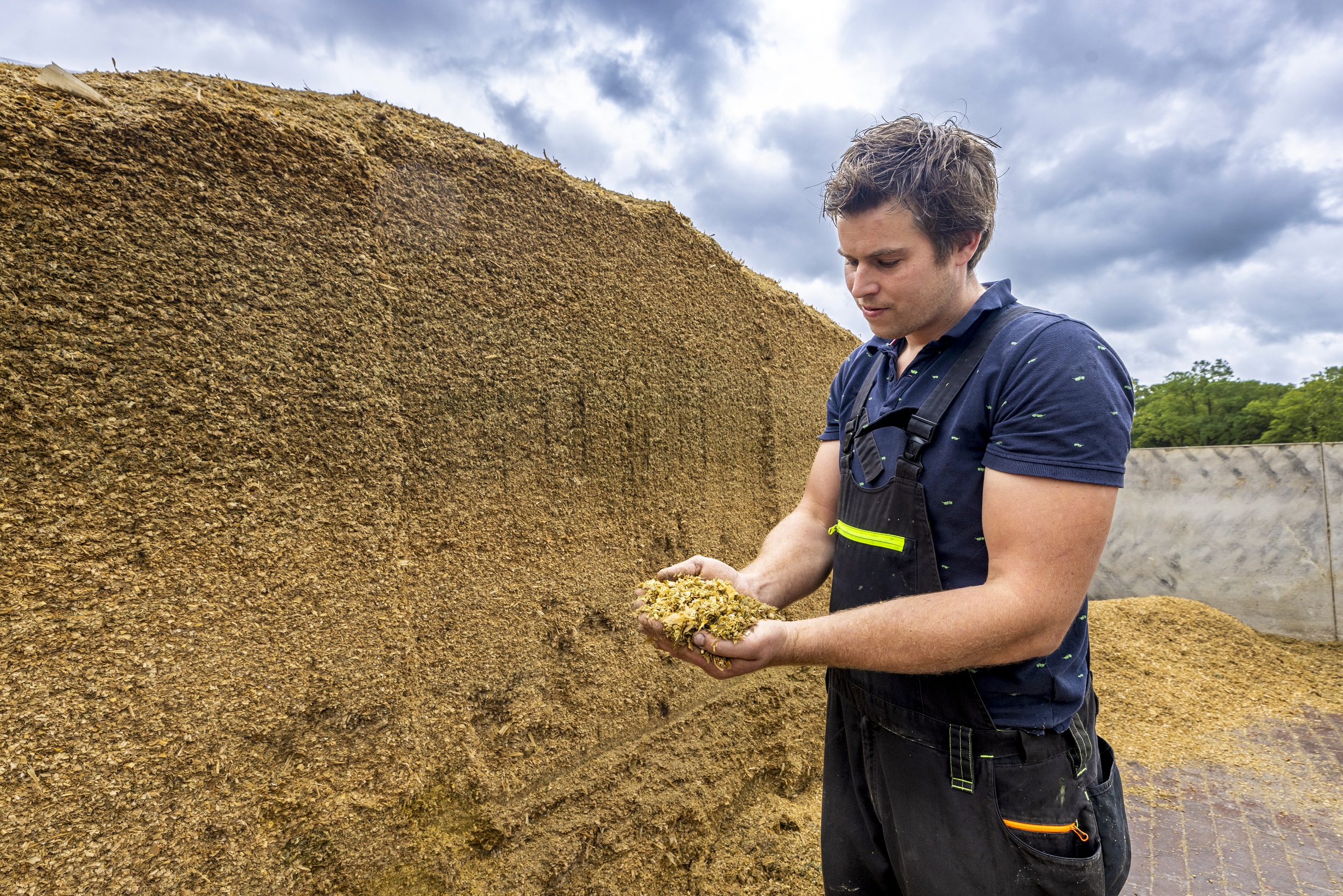In this study, we look at the effect of milk price on milk production and feed profits. In addition, we discuss some areas of concern in the current climate of relatively lower milk prices. The study is based on more than 70 Dutch dairy farmers who frequently use Farmdesk. Flemish dairy farmers are not included in this study because we do not have an automatic milk price data link for this, but similar trends can be expected.
From the start of 2022 we recorded strongly rising milk prices in the Netherlands up to a peak of almost 65.00 €/100 kg milk (at real contents) in late autumn. Unfortunately, a strong decline followed from New Year, whereby we even dipped back below 45.00 €/100 kg milk in the summer.
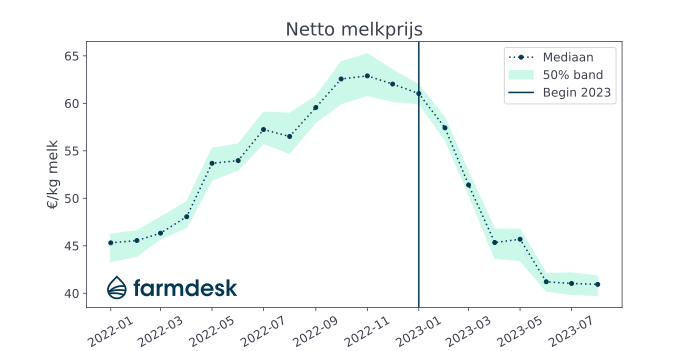
Like the milk price, the feed cost per cow shows the same overall trend. However, where the milk price fell below the level of early 2022, we see that the feed cost has fallen less sharply. In other words, feed costs fell proportionally less than the milk price.
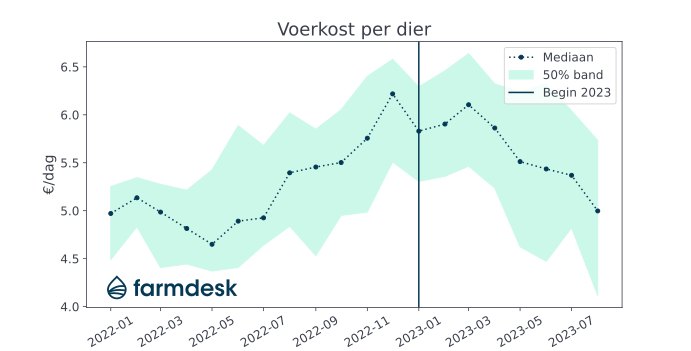
Relationship of milk price and milk production
Looking at milk productions, we see no marked difference in milk production over the period January 2022 to summer 2023.
In the fat and protein contents, we do observe a clear trend line, but this is the typical seasonal effect of increasing contents in the winter months and decreasing in the summer months.
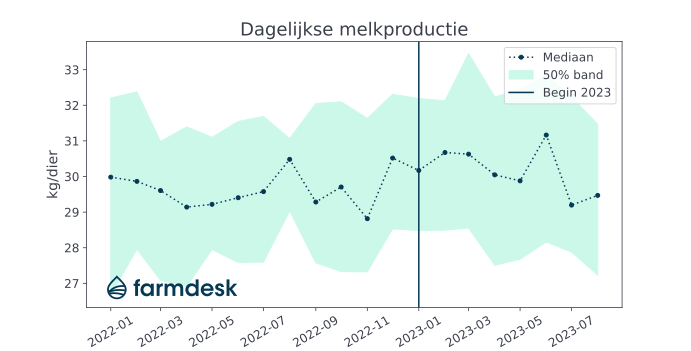
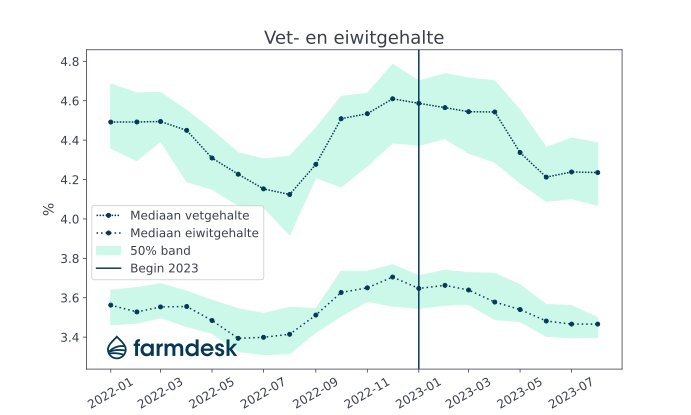
Relationship of milk price and feed profit
The feed profit per cow followed quite strongly the milk price evolution, which also makes sense. It is striking that the current effective feed profit per cow is around 7.00 €/cow/day, while at its peak it was 13.00 €/cow/day. Should this difference occur for an entire year, on a farm of 100 lactating cows this would result in as much as 219,000.00 € less feed profit.
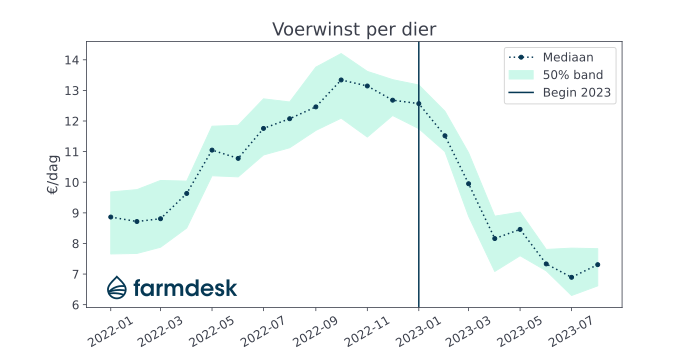
How to deal with relatively high costs?
With less frugality, could dairy farmers achieve more feed gains if they focus more on concentrate feed quality? Or does the challenge lie in more focus on maximizing feed quality from their own land, especially in times of expensive (concentrate) feed?
Now I hear many of you thinking that weather is a major factor in this and this was not a factor in 2022. True, but we see, for example, that farmers who dared to harvest corn quickly (after mid-August) had fewer problems with the digestibility of their cut corn. Those who were able to smoothly feed beets alongside the stiff corn were thus also able to correct with their own feed.
The figure below plots roughage milk (including, for example, beets or CCM) against feed profits. Dairy farmers who produce a lot of raw feed milk achieve significantly higher feed profits.
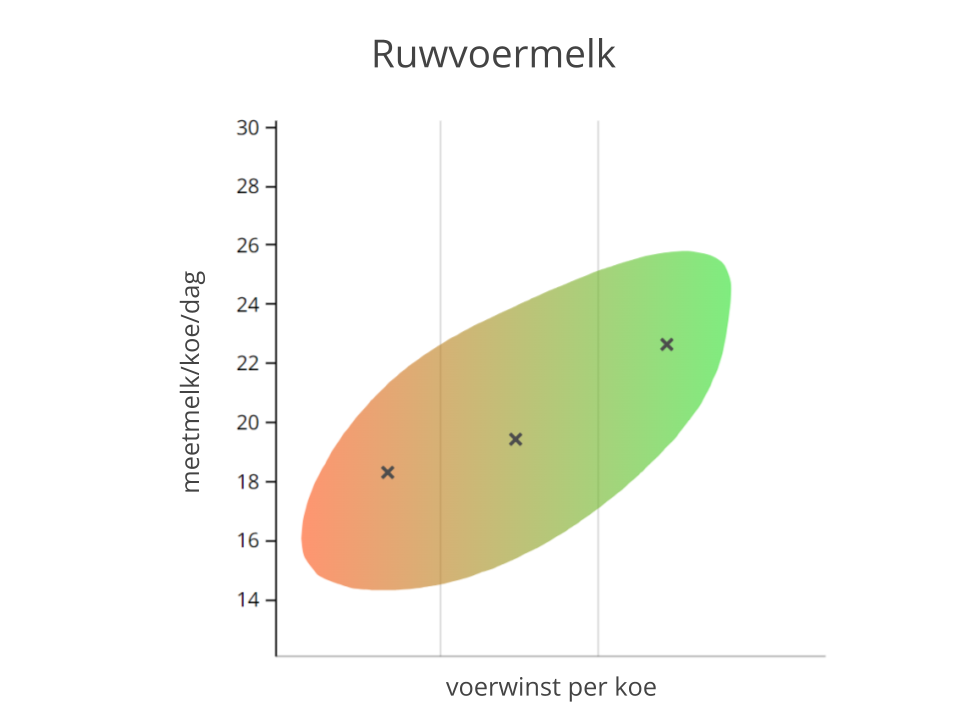
"Be wary of misplaced frugality in times of milk price squeeze and always focus on high-quality forage. Make the balancing act regarding protein/energy not only in the ration calculations but also in the preparation of the cropping plan, and make adjustments along the way with harvest timing and harvesting and storage methods where possible."
Wim Govaerts
Cover photo by Teo Do Rio on Unsplash


